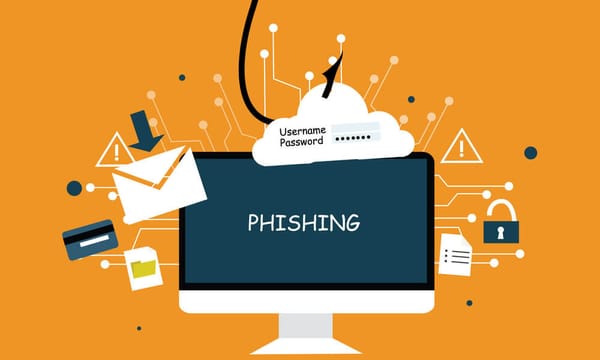The Ultimate Guide to Cybersecurity in 2025: Key Concepts, Threats, and Defenses

Introduction
In an era of digital transformation, cybersecurity has become a cornerstone of every modern organization. Whether you're a small business, an enterprise, or a public institution, the protection of your information systems is critical to maintaining operational continuity and customer trust.
With the increasing complexity of cyber threats such as malware (malicious software), ransomware, and phishing (hameçonnage), companies need to adopt a proactive and layered approach to protect their data and infrastructure. This article explores the core components of a strong cybersecurity strategy and how platforms like OCI (Oracle Cloud Infrastructure) can help support a secure IT ecosystem.
Understanding Cybersecurity and the Modern Threat Landscape
What is Cybersecurity?
Cybersecurity refers to the practices, tools, and policies designed to protect systems, networks, and data from digital attacks. Its goal is to ensure the confidentiality, integrity, and availability of information across all digital assets.
Cybersecurity covers a broad spectrum of areas, including application security, cloud security, endpoint protection, and user behavior monitoring. It is no longer an IT-only issue; it is a board-level concern that touches compliance, finance, operations, and customer service.
Common Types of Cyberattacks
A cyberattack is any attempt by malicious actors to gain unauthorized access to information, disrupt services, or steal data. Cyberattacks can be highly targeted or indiscriminate, affecting organizations of all sizes and industries.
Among the most frequent and dangerous types of cyberattacks are:
- Hameçonnage (Phishing): Deceptive emails or messages tricking users into revealing sensitive information or downloading malware.
- Rançongiciel (Ransomware): Malicious software that encrypts data and demands payment for its release.
- Malware (Logiciel malveillant): General term for harmful software, including viruses, trojans, spyware, and worms.
Data Protection and Information Security as Strategic Priorities
The Importance of Data Protection
Protection of data is not only a regulatory requirement but also a business imperative. A data breach can result in financial losses, legal penalties, and reputational damage. Data protection strategies must include encryption, access control, secure backups, and user awareness.
Whether data is stored on-premise or in the cloud, its security must be ensured through robust cybersecurity policies and reliable infrastructure.
Information Security (Sécurité Informatique) Best Practices
Information security encompasses the technologies and processes that protect sensitive business data. This includes managing network access, enforcing strong authentication, regularly patching systems, and implementing secure development practices.
Companies should adopt frameworks such as ISO 27001 or NIST to structure their security programs and conduct regular risk assessments to identify potential vulnerabilities.
Social Engineering: Exploiting the Human Element
One of the most insidious forms of cyberattack is social engineering (ingénierie sociale). Unlike technical exploits, social engineering targets human behavior. Attackers manipulate employees into giving away confidential information, granting access, or performing risky actions.
Common social engineering techniques include:
- Spear phishing: Personalized emails targeting specific individuals
- Pretexting: Pretending to be someone trustworthy to extract information
- Baiting: Using physical media or links to lure victims into executing malware
Training and awareness programs are essential to help employees recognize and resist these tactics.
Firewall Protection and the Role of OCI in Cyber Defense
Using Firewalls (Pare-feu) to Secure Networks
A firewall is a network security device that monitors and filters incoming and outgoing traffic based on an organization's security policies. It acts as a barrier between trusted internal networks and untrusted external sources.
Modern firewalls go beyond simple packet filtering to include:
- Deep packet inspection
- Application-level control
- Intrusion detection and prevention systems (IDS/IPS)
Deploying well-configured firewalls is a first line of defense in any cybersecurity strategy.
Leveraging OCI (Oracle Cloud Infrastructure) for Security
OCI offers a comprehensive suite of cloud security services to help organizations protect workloads in hybrid and multi-cloud environments. Key OCI security features include:
- Identity and access management (IAM)
- Network security with built-in firewalls and segmentation
- Data encryption at rest and in transit
- Autonomous threat detection and remediation
- Compliance and audit-ready reporting tools
By leveraging OCI, businesses can ensure enterprise-grade cybersecurity while scaling efficiently and maintaining regulatory compliance.
Building a Resilient Cybersecurity Strategy
To face today’s evolving cyber threats, organizations must adopt a multi-layered defense approach that combines technology, process, and people. Key pillars of a strong cybersecurity strategy include:
- Continuous monitoring and threat intelligence
- Endpoint and network protection
- Incident response planning and simulations
- Regular employee awareness training
- Secure cloud adoption using platforms like OCI
Conclusion
The increasing frequency and sophistication of cyberattacks make it essential for businesses to invest in advanced cybersecurity solutions. From protecting against malware, phishing, and ransomware to ensuring strong data protection and guarding against social engineering, every layer of your IT infrastructure must be secured.
By deploying robust firewalls, leveraging cloud services such as Oracle Cloud Infrastructure (OCI), and fostering a security-aware culture, organizations can reduce their attack surface and strengthen their resilience against digital threats.
Cybersecurity is not just a technology issue — it’s a business priority.




